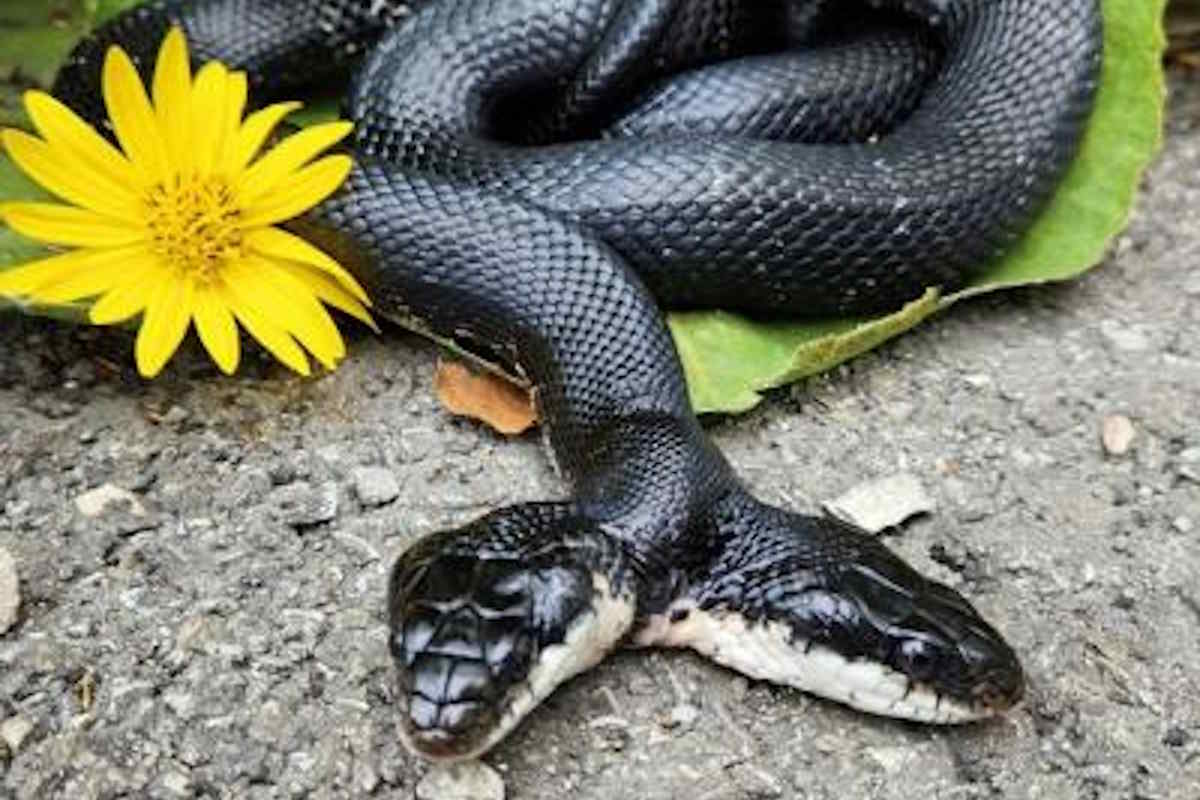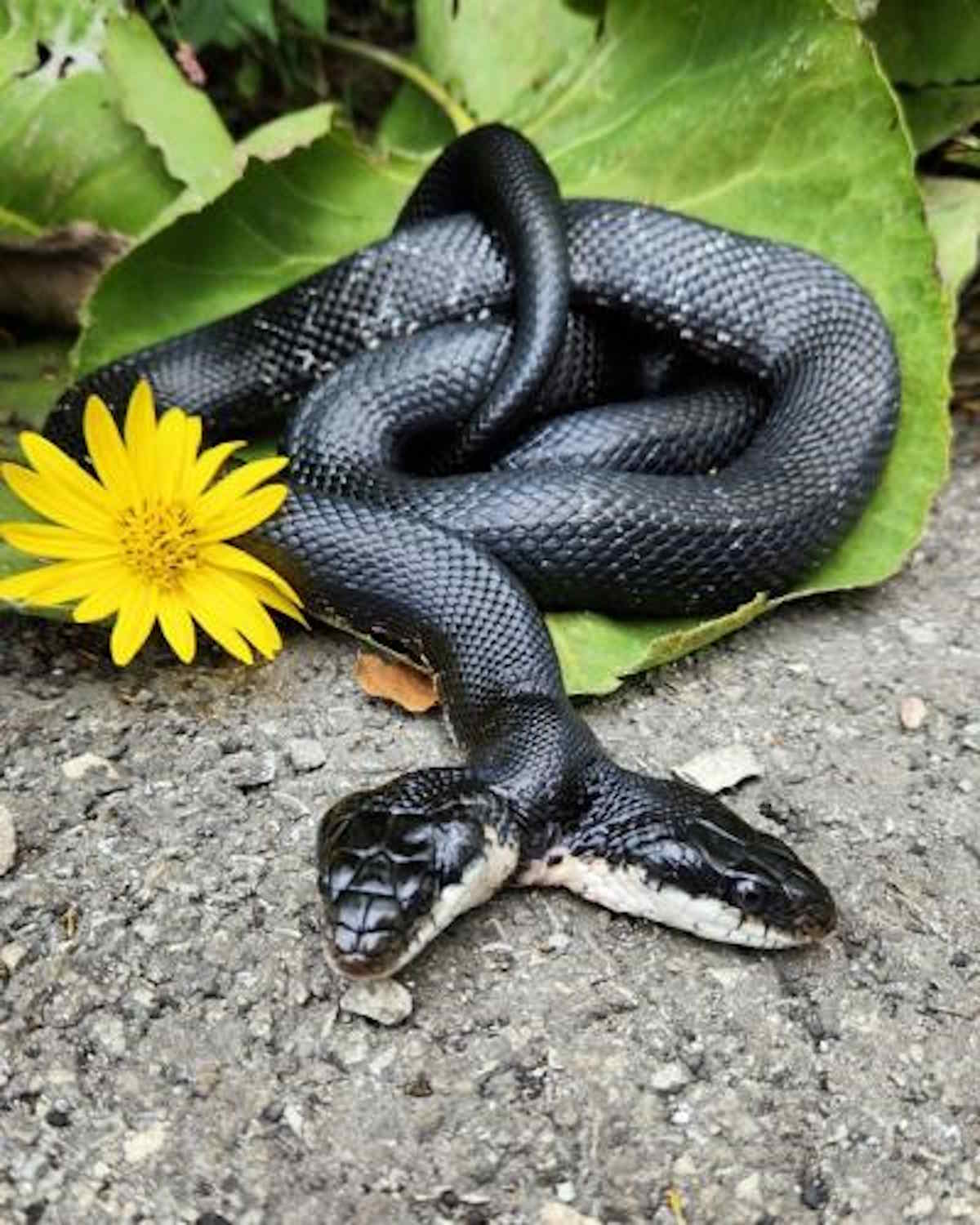A two-headed snake owned by a Missouri zoo has been placed in the care of veterinarians and operated on after an incident that alarmed the staff. He is now on the mend

@Saint Louis Zoo/Facebook
In an extraordinary tale of survival and medical intervention, the Saint Louis Zoo‘s unique resident, Tiger-Lily, has recently undergone surgery. Tiger-Lily, a female Pantherophis obsoletus, more commonly known as a “rat snake,” boasts a rare condition known as bicephaly, meaning she has two heads.
This fascinating creature was thrust into the spotlight after zoo staff observed her expelling blood, a worrying sign that led to immediate medical attention.
A rare condition calls for immediate action
Tiger-Lily’s case is a rare example of bicephaly, a phenomenon that poses significant health challenges. Upon noticing traces of blood, the zoo’s caretakers quickly acted, highlighting their commitment to the wellbeing of their charges. The snake was placed under the expert care of the Animal Health Team, who diagnosed her with pre-ovulatory stasis, a condition marked by the accumulation of eggs without ovulation.
Medical challenges and intervention
In normal circumstances, an ovary would develop follicles, which would then ovulate as eggs to be laid. However, Tiger-Lily’s reproductive cycle was disrupted, with follicles beginning to grow but not ovulating, causing them to remain stagnant and eventually leading to inflammation and the risk of infection. Dr. Michael Warshaw sheds light on this, explaining the decision to remove the snake’s ovaries.
The surgery, conducted on March 11, was a success, marking the beginning of Tiger-Lily’s rehabilitation journey at a Missouri Department of Conservation (MDC) center.
Extended rehabilitation and future Plans
Initially planned to conclude by March 18, Tiger-Lily’s rehabilitation stay has been extended to ensure her full recovery. Once deemed ready, she will be relocated to the Anita B. Gorman Discovery Center in Kansas City and other MDC locations, underlining the significance of her survival both as an educational asset and a testament to the biodiversity of Missouri.
A remarkable discovery and conservation efforts
Tiger-Lily’s story began in 2017, when a Missouri family stumbled upon her in their garden and alerted MDC officials, describing the astonishing sight of a two-headed snake in their yard. Indeed, Tiger-Lily’s existence is extraordinary, as she embodies a pair of conjoined twins, a rarity among snakes that often do not survive long in the wild. Despite the odds, Tiger-Lily has found a new home at the zoo, where she continues to captivate and educate visitors about the wonders and vulnerabilities of nature.

@Saint Louis Zoo/Facebook
These snakes don’t usually survive long in the wild, but Tiger-Lily can’t know that. Since that day in 2017, his new home has been just a zoo.
Source: Missouri Dept. of Conservation
